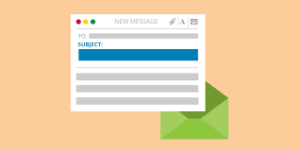Marketing psychology is a growing field of study. For a marketer to be successful its important to understand consumer behaviour.
The more you can understand how people will act or respond to your marketing campaign, branding, or pricing strategy, the more successful you’ll be. Marketing is about all people. It is important to understand how to attract the attention of prospects and communicate with them effectively.
Understanding who they are, what they want, and what drives their purchase decisions are essential to being able to market your goods and services to them.
This article will delve into what exactly marketing psychology is, and give you some tips, tricks and examples so you can start implementing them into your marketing campaign and overall strategy.
What is marketing psychology?
Marketing psychology is the study of how human behaviour and cognitive biases influence consumption and our approach to products and services. It explores differences in persuading, influencing and attracting consumers, and considers how different marketing strategies and media might influence a consumer’s response to a product or service.
It is closely related to consumer psychology – the study of how and why we buy goods and services.
Marketing psychology borrows insights from the behavioural sciences, such as neuroscience, behavioural economics, and the cognitive sciences. It seeks to understand why people buy the things they buy, what motivates their buying decisions, and what factors influence and persuade them to make a purchase and select one product over another.
How does marketing psychology benefit marketers?
Every marketer’s dream is to understand exactly what their target audience wants, and needs, and how to best deliver it to them.
If we know how our prospects will respond to a certain product, branding, logo, price point or advert we can easily predict the success of our marketing campaigns and adjust the individual factors and variables accordingly.
Marketing psychology gives us insights into how people respond to certain aspects of our marketing and sales activities. By understanding human behaviour and consumer psychology, we get a good insight into how our target market will respond to:
- The price of our products or services
- Our choice of brand logo
- The name of our product
- Our packaging – colours, shape, look, and feel
- Our adverts
- Our offers and call-to-actions
Marketing psychology tricks and examples
Here are some psychological marketing tricks, tips and examples that you can start to implement.
(1) Loss aversion marketing
During their research on prospect theory, Nobel-prize winning psychologists Daniel Kahneman and Amos Tversky discovered that people have an aversion to loss much more than they have a preference for gain.
Put simply this means that people seem to value avoiding a loss, much more than they value accessing an equivalent gain. This can explain why FOMO (the fear of missing out) is such an effective motivator. People fear missing out or losing opportunities, and this fear can be used to move prospects into making a buying decision or following through on your call-to-action.
Loss aversion marketing strategies include:
- Limited offers
You can produce a limited quantity of a certain product or offer a time-limited offer, such as a special price that is only valid for 24hr.
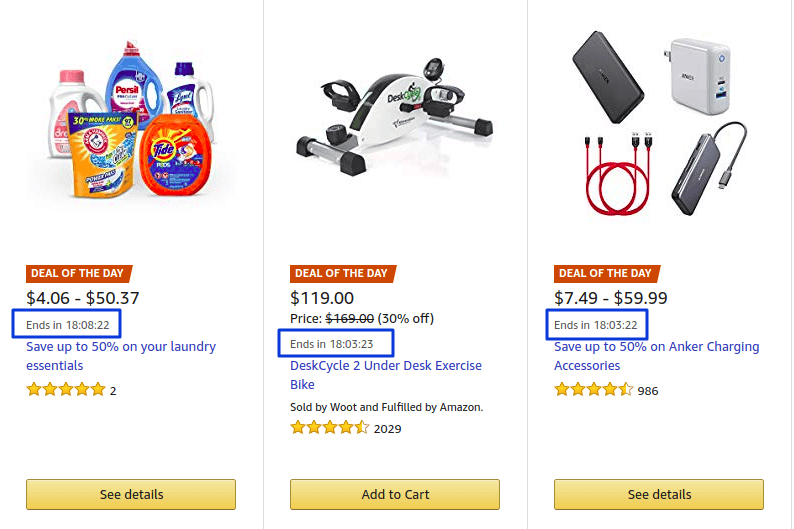
Scarcity is a powerful principle of persuasion and influence, and it works because of loss aversion or the fear of missing out. When you make a product or offer scarce, its appeal goes up because people don’t want to miss out or a rare product or limited offer.
This is why rare items such as limited edition cars, baseball cards or other collectibles sell out faster, and for much higher prices than their standard equivalents.
- Trial offers
We value items that we own more than items that we don’t own.
When you give someone a trial offer, you are giving them the opportunity to try your product or service for free, for a limited amount of time or with limited functionality.
For the duration of the trial they have access to your product and can make use of it, this gives them the feeling of ownership. This feeling of ownership means that a certain number of people will want to keep the product after the free-trial period is over, in order to avoid the feeling of losing it.
This is why Amazon continuously offer their customers free trials of their Amazon Prime service. When a user has used the Prime service and its extra features such as Prime Video etc, it can be hard to give them up when the trial is over. Most customers will continue their use of the Prime service in a bid to avoid feeling like they are losing out.
- Offer something free with their purchase
When you make a limited offer such as free shipping, or a free bonus gift with every purchase, the idea of losing this free gift can act as a strong incentive for convincing your customers to make a purchase that they were originally on the fence about.
(2) Habit marketing
Habits are things that we do that no longer require any conscious thought or effort. Habits are under the control of our subconscious minds, which makes them easier and more automatic to perform.
We turn repeated thoughts, actions, and behaviours into habits as a way of freeing-up mental resources. Anything we do repeatedly becomes a habit so that we can use our mental capacity for other things. Research has shown that it takes between 21 – 30 days of repeatedly doing something before it becomes a habit.
Getting up early, exercising daily, and eating healthy foods are all things we can learn to do habitually.
Our buying behaviours and purchase decisions can also become habits. If we continually buy a particular brand of bread we get in the habit of buying that brand. It becomes our brand of choice, but over time it no longer becomes our brand of choice – it becomes our brand of habit.
If we buy certain products and brands for long enough, they become automatic purchase decisions or buying habits. We don’t need any advertising or clever marketing campaigns to persuade us to buy that brand – we buy out of habit. Once a habit is formed it takes conscious effort to break that habit or replace it with a new habit. Once we have a brand of choice and are in the habit of buying that brand, it can be difficult for us to consider using another brand.
I know guys that started using Gillette razors because that was the brand their father used, and now they also use it out of habit. There are many different razor blade brands and companies to choose from, but the habit of buying Gillette makes it an easy purchase decision.
Trying another brand involves more effort than sticking to one we already know and habitually use.
We have to consider alternative brands and do research on their effectiveness. We might read online reviews to see what other customers think. There is also the risk that we may lose money if we try a different brand and are not happy with it. This is why once we are in the habit of using a product, and that product works for us and we are satisfied with it, we may not ever consider another brand unless we have good reason to.
Understanding the psychology of habit and how to use it in your marketing can be the key to winning new customers and creating long-term brand loyalty.
 How can marketers benefit from the power of habit?
How can marketers benefit from the power of habit?
- Offer 30 day free trials of your product
You want to get your customers to use your product, so offer them a free trial to get the product in their hands at no risk to them. Offering a trial between 21 – 30 days increases the likelihood of the consumer forming the habit of using your product.
Once the trial ends if the habit has been successfully established you should start to see more and more trial users become permanent or long-term customers.
- Understanding when to target them with the right offers
The best way to do this is by using a loyalty scheme such as a loyalty card. These cards allow you to track and collect data on your customers’ purchases.
Once you analyse the data you should be able to spot shopping trends and determine which products are habitual purchases. You can then target them at these times with bespoke offers, which align with those existing habits. Targeting prospects when you know they habitually buy a particular product also gives you a great opportunity to steal them away from another brand.
Give them a reason to break their brand habit and to try your brand instead – offering a free trial or free sample is a great way to loosen buying habits and get them to consider you as an alternative.
- Target your audience during life-events
Life events are those moments in your target prospect’s life when they are undergoing big changes. This can involve moving house, getting married, or having children.
Life events are a great time to target your prospects as they are key opportunities to disrupt their existing buying habits or to establish completely new ones.
If you know your prospects are expecting their first child, now is a great time to offer them a discount or coupon for baby food, or diapers. Perhaps they’ve changed their diet and gone meat-free, now is a great opportunity to get your brand of vegetarian food in front of them with some targeted display ads, or by giving away a free sample at the supermarket.
Consumers are also less price-sensitive around life events. When someone gets married or has a child they want to buy the best and will spend more than usual to ensure they are buying quality products and services.
Having the data and access to their purchase behaviour is key to being able to target the right people, at the right time, with the right offer. This is one of the reasons supermarkets excel at this sort of marketing – they have huge amounts of data and use it to better understand their customers.
(3) Social Proof
Social proof is the term we use to describe the act of using the behaviour of others to determine our own.
In other words, when we see a large number of people acting in a certain way it increases the likelihood that we will also act in the same way. When we see someone else do something it acts as “social proof” that that action is something we should do also.
I have talked about the principle of social proof in more depth in previous posts. Psychologist Robert Cialdini has done a number of experiments that demonstrate the effect of social proof.
During the covid-19 lockdowns, across many countries, you saw people panic buying, particularly toilet paper. This behaviour was completely irrational and was reported widely by news outlets across the globe. Despite being something to laugh at, the principle of social proof kicked in and seeing more and more people buying stacks of toilet paper caused other people to believe that they too should be buying stacks and stacks of toilet paper!
When we are unsure of how to act in a given situation, we will look to the masses and see what they are doing to decide what we should or should not do.
How can marketers use social proof?
- Use influencers to promote your product
Influencers are popular because of the principle of social proof. When a popular person is seen to use or endorse a product, they lend their credibility and likeability to your product by means of association.
Find out who the influencers are in your target market and approach them.
- Use reviews and testimonials
Ask customers to leave reviews so that other potential customers can read about the great experiences other people have had with your product or service.
The first thing most people do before they buy a product online is to check out the reviews and testimonials.
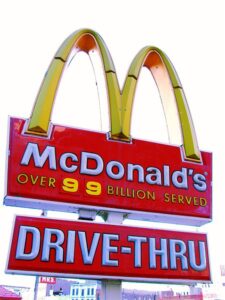 If they are positive then they act as powerful social proof about the effectiveness of your product and nudge people who may have been on the fence about whether to buy or not to make a purchase.
If they are positive then they act as powerful social proof about the effectiveness of your product and nudge people who may have been on the fence about whether to buy or not to make a purchase.
- Mention the number of products you have sold
Amazon do this well with their “best seller” tittle they attribute the products that sell well. Seeing those two words acts as a powerful form of social proof – “if it’s a best seller it means lots of people brought it so it must be good, right?”
McDonalds also did this is their early days when they use to mention the number of hamburgers they had sold or the number of customers served.
You can also do this by having a running count on your website of the number of products sold. You can also add a time to this e.g. “34 sold in the last 24 hours”.
- Use official accreditation
It may be a Trustpilot rating, the famous blue tick on Twitter, or the stamp of approval from a trusted authority in your market. By getting official accreditation you have a proven way of establishing credibility within your market, which also gives your first-time customer peace of mind and confidence to buy from you.

(4) The Pratfall effect
The Pratfall effect states that our attraction to someone who is perceived to be superior in a particular field or domain increases when they commit a blunder of some sort which displays their normality.
Put simply – this means that if someone we revere and hold in high regard commits a small blunder, we tend to be attracted to and like that person even more. This is because we relate to people who are like us. When we see someone we respect commit the same sort of error that we would, it brings them into a new light and we see their “normal” side, to which we can relate more.
How can marketers use the Pratfall effect?
- Showcase your flaws
Guinness is a great example of how to use the Pratfall effect and turn a perceived negative into a positive.
A pint of Guinness takes a lot longer to pour than a pint of any other beer. This is because of the consistency of Guinness – it needs time to settle before you can carry on pouring. The average time to pour a perfect pint of Guinness is 119 seconds or almost two full minutes. That’s a long time to wait, especially in a busy bar where lots of people are waiting or where you may be buying drinks for multiple people.
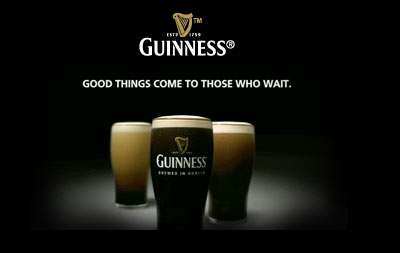
Guinness recognised that long pour times were having a detrimental effect on their sales in pubs and bars. But instead of hiding this perceived negative attribute, they decided to use the Pratfall effect and came up with the “Good things come to those who wait” marketing campaign.
This had the effect of equating the longer pour time to higher quality, making people relish the fact that their pint of Guinness would take longer to pour than an average beer. They turned what was considered a negative feature of the product into a positive.
- Own your mistakes
If you make a mistake then own it. Instead of trying to hide it or bury it as deep as possible, own it and talk about it – your customers will appreciate you so much more if you can honestly own up to any mistakes you have made. Your honesty and transparency will go a long way with customers, who don’t want to be lied to, deceived or patronised in any way.
Admitting that you made a mistake, that you have flaws and are not perfect, and are trying to rectify the flaws and learn from your mistakes will give you a tremendous amount of goodwill with your customers.
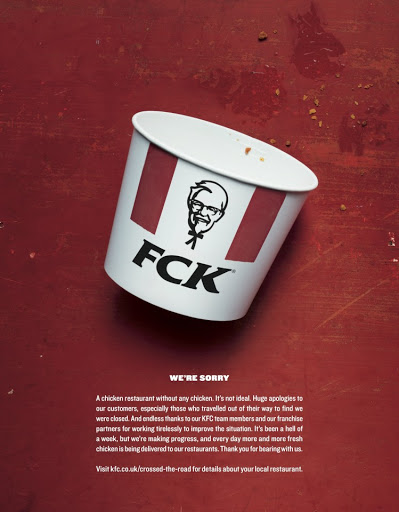
We all make mistakes, so stop trying to portray an image of perfection – your customers will see right through it.
A great example of owning your mistakes is the FCK campaign launched by KFC in the UK.
When their new food delivery partner had major logistical issues it meant that they couldn’t get any fresh chicken delivered to the stores. Hundreds of KFC stores across the UK had to close because they didn’t have any chicken in stock.
Customers were furious, and this whole incident went on for weeks with more and more negative mentions of the brand on social media and the mainstream media.
KFC decided to own the mistake. They did this with a brilliant marketing campaign which expressed their apologies to their customers and also explained how they were tackling the issue.
The campaign was a huge success and gave disgruntled customers something to laugh about whilst being able to appreciate the honesty of the company.
Summary and further reading
Marketing psychology is an ever-increasing field of study, with more research being conducted and more valuable insights being gleaned. When you understand some of the universal principles in human behaviour and cognitive science you will be better equipped with the insights that can turn a failing product or marketing campaign into a winning one.
Knowing the best way to market a new product, or how to turn a flaw into an attribute is possible when we understand human behaviour and apply these insights to our marketing and sales activity.
Give yourself an edge over your competitors by applying some of these psychological marketing tricks and principles to your campaigns and test the results for yourself.
Full Suite Marketing was born out of a passion for marketing and psychology, so check out some of the posts below which cover various aspects of marketing psychology which you may also find interesting:
Goals: the driving force behind why we buy
6 psychological triggers that attract customers and boost sales




